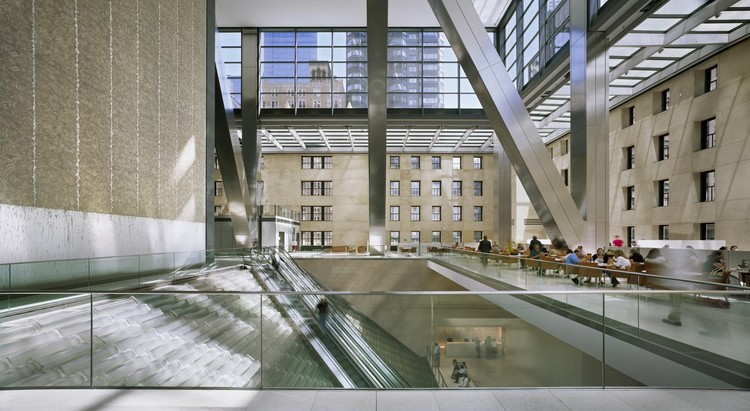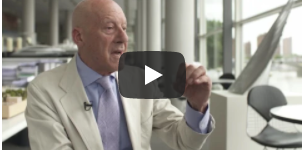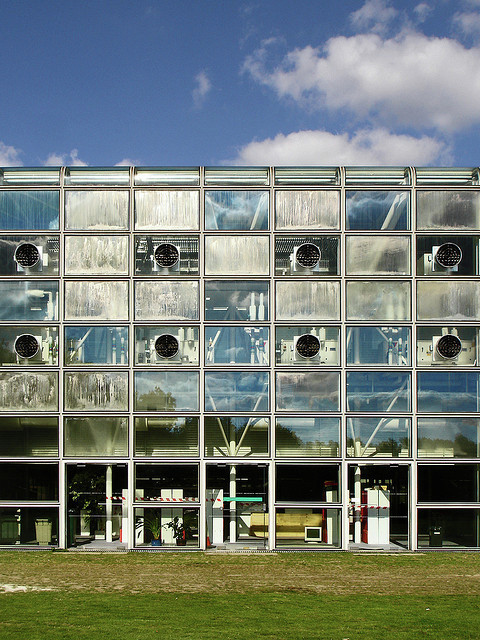Interdisciplinary Architecture and the Future of Cities
Architecture, as both a profession and the built environment, currently finds itself at a crossroads in trying to adapt to a world in constant flux. Cities and its people face continuous socio-economic, political and environmental change on a daily basis, prompting a necessary rethink in the evolution of sustainable urbanization. With a focus on housing, society and cultural heritage, RIBA’s International Conference, Change in the City, aims to offer insight into the “New Urban Agenda” and how architects can play an interdisciplinary role in future urban development.
Speaking in an interview ahead of the conference, Norman Foster is a strong advocate for a careful consideration of what aspects of urban life need to be prioritized when designing cities of the future. For an increasingly global society, Foster stresses the need for architecture to surpass buildings and tackle its greatest obstacle – global warming, honing in on its roots and factors involved to create viable urban solutions.
Sainsbury Centre, Foster + Partners. Image © Tim Caynes
“By 2050, 25% of humanity will be living in cities. The biggest challenge facing cities and urbanities is global warming. The causes of that, the generation of power, industry, agriculture, transport and buildings, it is that collective that needs to be addressed.“
Hearst Tower, Foster + Partners. Image © Chuck Choi
Infrastructure, “the urban glue that binds buildings together”, is another aspect that architects need to work with, surpassing the expectations of simply creating single structures while also encompassing transportation and public space. This is a step in reviving the condition of traditional cities, which did not separate areas of living, working, and culture and created mixed-use environments instead of ghettoization.
“We have to be looking outside of buildings. We have to be looking at settlements, the combination of infrastructure, the connections, the public spaces, the links and the transport, because the sustainable now and in the future, it’s about strong civic leadership, pedestrianisation, people over cars. It’s about high density.“
Spaceport America, Foster + Partners. Image © Nigel Young
Furthermore, Foster argues that the only way to be able to enact such changes and advances in sustainability is through a revised interdisciplinary approach to design. Central to this is the architect’s ability to advocate, share knowledge and collaborate with other fields, allowing other architects to build on prior work.
“As a profession, we have to embrace other disciplines. The future and addressing the issues of greater complexity means that from the very beginning we need more disciplines working together. We can’t have the arrogance of believing that we can design a building and let the others kind of make it a reality.“
For all of Lord Foster’s insights into the future of cities, check out the full interview above.
News via: RIBA.
Please find the original article here
- Written by
Osman Bari, ArchDaily
--Future of Construction 10:06, 20 Oct 2017 (BST)
Featured articles and news
CIOB report; a blueprint for SDGs and the built environment
Pairing the Sustainable Development Goals with projects.
Latest Build UK Building Safety Regime explainer published
Key elements in one short, now updated document.
UKGBC launch the UK Climate Resilience Roadmap
First guidance of its kind on direct climate impacts for the built environment and how it can adapt.
CLC Health, Safety and Wellbeing Strategy 2025
Launched by the Minister for Industry to look at fatalities on site, improving mental health and other issues.
One of the most impressive Victorian architects. Book review.
Common Assessment Standard now with building safety
New CAS update now includes mandatory building safety questions.
RTPI leader to become new CIOB Chief Executive Officer
Dr Victoria Hills MRTPI, FICE to take over after Caroline Gumble’s departure.
Social and affordable housing, a long term plan for delivery
The “Delivering a Decade of Renewal for Social and Affordable Housing” strategy sets out future path.
A change to adoptive architecture
Effects of global weather warming on architectural detailing, material choice and human interaction.
The proposed publicly owned and backed subsidiary of Homes England, to facilitate new homes.
How big is the problem and what can we do to mitigate the effects?
Overheating guidance and tools for building designers
A number of cool guides to help with the heat.
The UK's Modern Industrial Strategy: A 10 year plan
Previous consultation criticism, current key elements and general support with some persisting reservations.
Building Safety Regulator reforms
New roles, new staff and a new fast track service pave the way for a single construction regulator.
Architectural Technologist CPDs and Communications
CIAT CPD… and how you can do it!
Cooling centres and cool spaces
Managing extreme heat in cities by directing the public to places for heat stress relief and water sources.
Winter gardens: A brief history and warm variations
Extending the season with glass in different forms and terms.
Restoring Great Yarmouth's Winter Gardens
Transforming one of the least sustainable constructions imaginable.




























